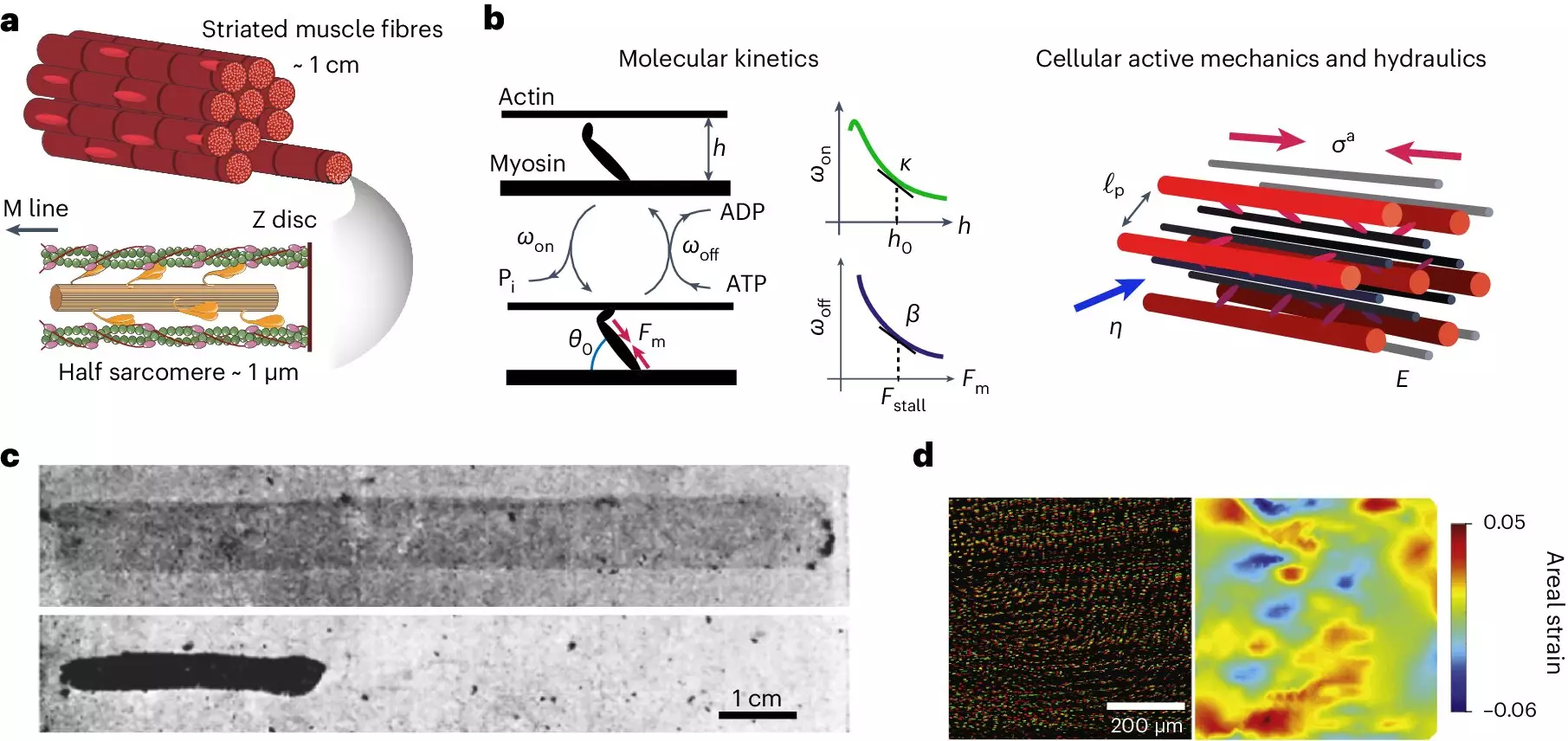Recent research has unveiled the intricacies of muscle function, suggesting that the flow of water within muscle fibers significantly influences the rate at which these fibers contract. This has profound implications for various fields, from sports medicine to bioengineering. A study by physicists at the University of Michigan and Harvard offers a fresh perspective on muscle functionality, revealing that viewing muscle cells merely as molecular entities is an oversimplification. Instead, muscles should be understood as complex, three-dimensional structures, rich in fluids, that operate under unique dynamic principles.
The age-old notion that muscles are primarily composed of proteins and contract via biochemical reactions has been drastically challenged. It turns out that the water contained within these fibers plays an equally pivotal role. This research posits that the movement of water within muscle fibers may dictate how quickly they can contract, thus setting fundamental limits on muscle performance. This paradigm shift compels us to rethink the nature of muscle contraction and explore its mechanisms from a broader, holistic viewpoint.
The Role of Fluid Dynamics in Muscle Contraction
Scientists now regard muscle fibers not merely as lifeless bags of molecules, but rather as active, sponge-like entities brimming with water. This startling visualization reveals that when muscle fibers contract, they don’t just shorten along their length; they also bulge outward, showcasing a phenomenon dubbed “odd elasticity.” This behavior allows muscles to generate power through three-dimensional deformation, enabling them to harness energy in innovative ways.
Imagine a sponge capable of squeezing itself through its own structure; this is essentially how a muscle operates under the influence of its molecular motors, which convert chemical energy into mechanical work. Such an interpretation elevates our understanding of muscle fibers beyond a static perspective, highlighting their dynamic nature engaged in constant interaction with the surrounding fluid.
Fluid dynamics takes center stage when we consider the limits of muscle performance. High-velocity contractions, particularly in smaller organisms like flying insects, are largely dictated by the flow of water within muscle fibers rather than by neural control. This revelation suggests that muscle performance isn’t solely an issue of neuronal signals, but also one of hydrodynamic efficiency. In these cases, faster contractions hinge on the capacity of fluids to move through muscle fibers, thus painting a more nuanced picture of muscle physiology.
Odd Elasticity: A Revolutionary Concept in Muscle Function
The phenomenon of “odd elasticity” provides a remarkable insight into muscle mechanics. Unlike conventional elastic materials, which exhibit reciprocal behavior—stretching and releasing energy in a linear manner—muscle fibers behave as complex entities with asymmetric responses. When a muscle contracts, it does not merely return to its original state; instead, it morphs in unexpected ways that conserve energy through unique deformation patterns. Understanding this odd elasticity broadens our comprehension of how muscles function energetically and dynamically.
This new perspective illuminates a paradox in muscle operation: while they violate the fundamental principle of energy conservation, they simultaneously redefine what it means to convert chemical energy into mechanical work. As muscles operate like engines, they generate power through intricate interactions, suggesting that they can produce energy beyond what’s typically expected from traditional mechanical systems. This groundbreaking understanding could revolutionize how we approach muscle training, rehabilitation, and even artificial muscle design.
Implications for Research and Real-World Applications
The findings from this study have significant implications not only for scientific research but also for practical applications in various industries, including sports, robotics, and medicine. For athletes and trainers, the insights into muscle contraction rates and the role of water flow can inform training regimens aimed at enhancing performance. Understanding the fluid dynamics in muscles may lead to advancements in techniques that optimize athletic output while minimizing injury risks.
In the realm of bioengineering, the principles of active hydraulics and odd elasticity may inspire new approaches to designing artificial muscles and materials. If engineers can replicate these natural systems, we may very well see innovations that dramatically improve the efficiency and functionality of robotic actuators, prosthetics, and soft robotics.
The call for further experimental validation underscores the importance of this research as a stepping stone to unraveling the complexities of muscle function. By examining muscle operations through the lenses of fluid mechanics and elasticity, we offer a comprehensive view that could reshape how we understand an essential biological system. It is a thrilling moment in muscle physiology that transcends the surface, urging us to delve deeper into the hydrodynamic aspects of life itself.


Leave a Reply